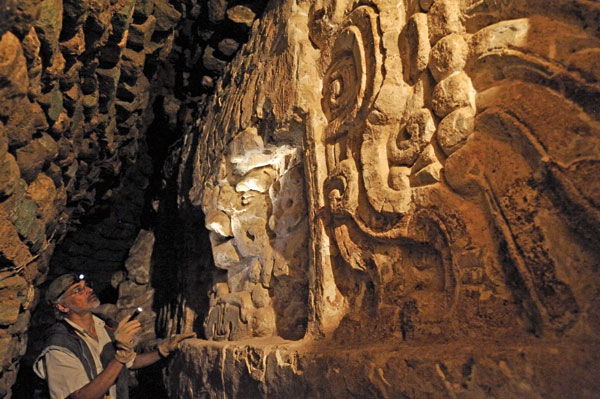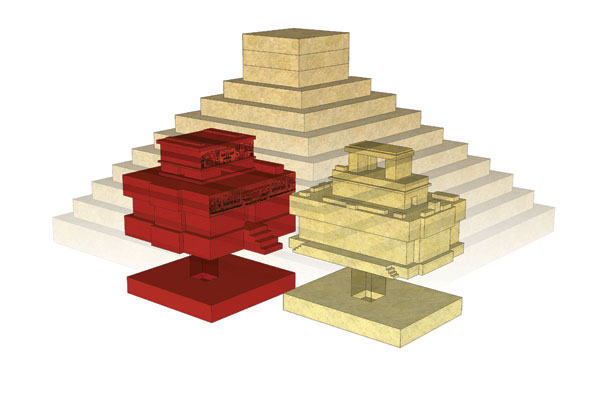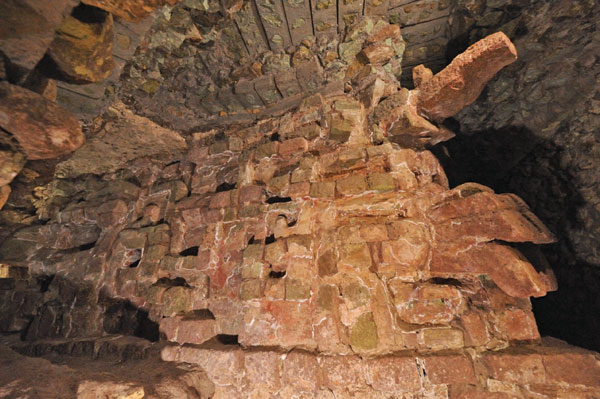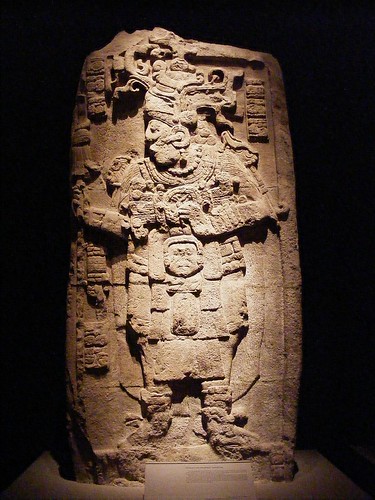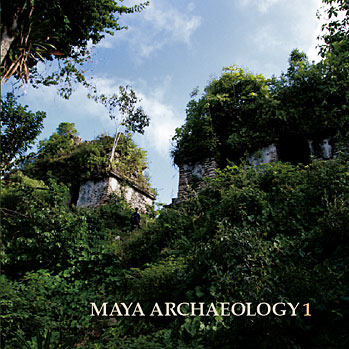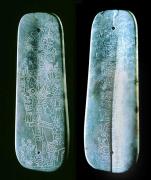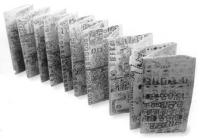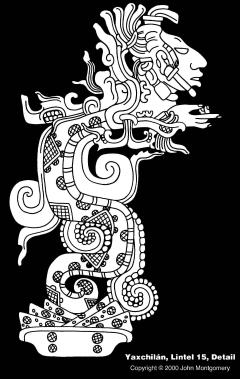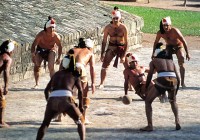Maya News Updates 2013, No. 1
Removal of Traditional Maya Elements from Altarpiece at the Iglesia de Santiago Atitlán?
In the last week of 2012 I received an email which informed me that the central altarpiece in the sixteenth century Colonial church of Santiago Atitlan is in imminent danger of being dismantled by the local priest who objects to certain traditional Maya components. This email continues with: "As many of you know, the altarpiece is unique in its sensitive blending of traditional Maya and orthodox Roman Catholic elements. Originally constructed at an unknown date during the early Colonial era, the altarpiece underwent extensive reconstruction after it collapsed during a series of severe earthquakes in the mid-twentieth century. The reconstruction effort took place from 1970 to 1981 under the direction of various parish priests, beginning with Fathers Ramon Carlin and Jude Pancini and ending with Father Stanley Rother who died just as the altarpiece was being completed. To support craftsmanship within the community, these priests commissioned a local Tz’utujil Maya sculptor, Diego Chávez Petzey, and his younger brother, Nicolás Chávez Sojuel, to reerect the monument and to carve replacement panels for those sections that were too damaged for reuse. Both of these artists are still alive and continue to sculpt. Rather than strictly follow the original arrangement of the altarpiece, the Chávez brothers were encouraged to replace damaged panels with entirely new compositions based in part on traditional Maya religious beliefs and rituals familiar to the community."
The email is written by Allen Christenson, who first saw the altarpiece in 1977, at the very time the Chávez brothers were reconstructing it and carving new panels along its base. The altarpiece struck him with its masterful blending of Roman Catholic and traditional Maya motifs and his interest resulted in his Ph.D. dissertation, subsequently followed by the publication of his 2001 book "Art and Society in a Highland Maya Community: The Altarpiece of Santiago Atitlán". His dissertation centered on the altarpiece and how it is intimately connected with the life of the community, while his book focused on the altarpiece and associated ceremonies. As he wrote in his email, "(t)o see indigenous beliefs and rituals expressed sculpturally by living Maya artists is extremely rare. Never before or since, has such a sculptural project been undertaken on so grand a scale. In my opinion it is the most significant work of sacred art by living Maya in Guatemala in the last 100 years, if not since the Spanish Conquest."
Christenson furthermore writes that "(t)he relationship between the artists and the parish priests was a collaborative one in which all were active participants. The Chávez brothers carried out the project with the intention of asserting the legitimacy of traditional Tz’utujil-Maya faith as a complement to Roman Catholicism. It was meant to be a unifying gesture within the community and it has done just that over the past 40 years. The altarpiece presents an invaluable visual display of important Tz’utujil Maya rituals and beliefs that is cherished by the community of Santiago Atitlan as a significant expression of their cultural identity. In traditional Maya faith, such sacred carved objects are living entities and the altarpiece is the focus of veneration by both traditional Maya and orthodox Roman Catholic members of the community alike."
At the end of his email Christensen makes it very clear that is "(i)t is the furthest thing from my mind to interfere with local community affairs in Guatemala. If it were the will of the community as a whole to dismantle the altarpiece it would be heartbreaking but it would be entirely their concern. But in this case it is most certainly not the desire of the community as a whole but rather the current parish priest and a relatively small number of like-minded individuals in the community. There will be a planning meeting at the town hall in Santiago Atitlan to determine the fate of the altarpiece in mid-January. My understanding is that not only is the altarpiece in danger of being dismantled in order to remove the traditional Maya elements, but that those panels would also be destroyed so that they could not be used again in any way. Hopefully this is just a preliminary meeting but one never knows. The Chávez family and others have asked if I could draw up an official letter in support of the altarpiece because the priest has tried to promulgate the idea that it is of little cultural or historical value outside a few local Maya traditionalists. They also expressed hope that others might be contacted to help. This letter is in response to their wishes."
I was struck by Christenson's email and the sensitivity with which he described the distressing news regarding the altarpiece at the Iglesia de Santiago Atitlán. His sensitivity works, in my opinion, both ways and those who are willing to help are requested to do the following:
"What would help would be if any of you could write a letter of support, however brief, that could be brought forward at this and subsequent meetings to show that there is international concern. This might forestall any immediate action. The letters would preferably be in Spanish, but any language would help if only symbolically. It is not my intention to criticize the priest, nor should anyone else. [NB: Underlining in original] I am certain that he is sincere in his beliefs and is only acting according to his own conscience, which I entirely respect. I haven’t included his name because he should not be the focus of any of the letters in support of the altarpiece. It is only my desire to make it clear that the altarpiece is of historical and cultural value to a large portion of the local community as well as to the outside world. Official looking letters (printed on letterhead and scanned would be fine I’m sure) might hold greater weight but anything would help."
The letters can be send as an attachment to Allen Christenson (allen_christenson@byu.edu). He will pass the letters on to the appropriate people advocating the preservation of the altarpiece.
NB: This text is based on the email I received from Allen on December 29, 2012; it has been edited and posted by me on Maya News Updates with the permission and approval of Allen, including his email address. Both photographs of the altarpiece were graciously put at the disposal of Maya News Updates by Allen as well.
Erik




























